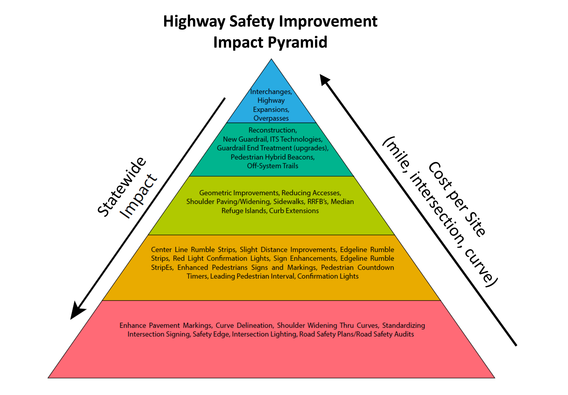Road authorities in Minnesota have tools and processes in place to identify locations with higher incidence and rates of severe crashes in a given time frame. This information is often used to identify solutions based on the crash history of a specific location on the system. This approach is reactive, requiring crashes to occur before deciding which improvements to apply for safety. We know we need to continue to assess the system based on crash history, but a shortcoming with this approach is that over 90 percent of severe crashes occur at locations that do not have a high severe crash history.
Systemic safety planning opens the door for road authorities to proactively identify safety improvements that most effectively reduce the chances of life-changing crashes from ever occurring. This type of approach is critical if Minnesota is going to make significant strides toward zero deaths and zero severe injuries on its roadway system.

The primary objective of systemic safety planning is to identify potential low- and medium-cost safety projects linked directly to the contributing factors associated with the most severe crashes across the system.
Systemic safety planning uses a system-wide risk assessment and includes the following steps:
- Identify the types of severe crashes (fatal and serious injury) with the highest number of occurrences that represent the greatest opportunity for reduction, known as the “focus crash types.” This first level also identifies the roadway and traffic characteristics that are common to the locations with the focus crash types.
- Prioritize roadway segments, curves, and intersections based on the presence of identified risk factors found at locations with focus crash types. The locations with multiple risk factors are considered high-priority candidates for potential additional safety investments.
- Develop a prioritized list of potential safety strategies that have been proven effective at reducing focus crash types.
- Provide potential safety projects at the specific locations identified as high-priority for safety investments.
The planning process results in a “tiered” approach to traffic safety, prioritizing higher-risk facilities for limited highway safety project funds (including the federal Highway Safety Improvement Program), regardless of crash history.
The strength in systemic safety planning is that it switches the mentality from chasing severe crashes across the state to preventing severe crashes before they occur. Identifying higher risk facilities can help to deploy lower-cost strategies at hundreds of intersections and/or miles across the entire system. This helps to reduce crashes proactively and systemically, making the roadway system safer and more resilient over time.
- County Roadway Safety Plans (MnDOT)
- Safety Planning (MnDOT)
